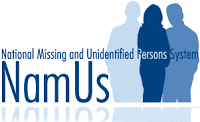
As a private investigator in my home state of Oregon, I often have clients who want me to find a “missing” person. There are many reasons people disappear. Sometimes people disappear willingly for various reasons and other times people go missing under suspicious circumstances. Sometimes mental illness and cognitive impairment as well as physical disabilities also play a role. Stranger abductions do happen but are statistically very rare.
No one really knows for sure but it has been estimated that about 800,000 persons go missing each year in the United States. More than half of these are juvenile runaways and persons forced out of their homes by family members or roommates. Most of these missing persons are found by law enforcement within a short time. I usually get called when persons go missing for prolonged periods of time and when traditional law enforcement methods have failed. Often law enforcement has failed not because they do not have good investigators but because they have limited resources to devote to finding someone unless there are obvious signs of foul play.
Some Missing People are Not Really Missing
As a private investigator most of the time I am looking for someone who is not really “missing” in the traditional sense. I am usually looking for persons who have skipped out on a debt or persons who need to be served with legal papers. These people are just keeping a real low profile. Sometimes I am hired to find lost loves, heirs, or estranged family members. These people are not “missing” – it is just that the client who hired me does not know where they are.
All of these types of investigations are usually very straightforward. They start with copious information collection – gathering as much relevant background information as possible about the person in question (full name, date of birth, SSN, last known addresses, last known neighbors, employers, phone numbers known to have been associated with the person, etc., etc.). I then check several data bases that I subscribe to as an investigator and conduct an extensive Social Media search. Sometimes I make a few phone calls and, when necessary, get out on-the-street and start contacting and interviewing persons who might have some knowledge of the person’s current whereabouts.
Some Missing People Simply Vanish
Sometimes I get a genuine case where someone disappeared for seemingly no reason. Most of the time these are family members who just vanished after going to the store, taking a walk in the neighborhood, driving home from work, or doing some other normal every-day activity. One of the most devastating things that can happen to anyone is the disappearance of a loved one. For an investigator these cases can be perplexing and very challenging.
A Little Known Resource
 As part of the investigation it is sometimes appropriate for me to use NamUs. What is NamUs and how can it aid an investigator (or even a family member or any concerned person) in locating a missing person?
As part of the investigation it is sometimes appropriate for me to use NamUs. What is NamUs and how can it aid an investigator (or even a family member or any concerned person) in locating a missing person?
NamUs is an acronym for The National Institute of Justice’s National Missing and Unidentified Persons System. It was formed in 2009 and is funded by the National Institute of Justice. It is an important tool in some missing person investigations.
Surprisingly, many investigators know very little, if anything, about NamUs. According to the U.S. Department of Justice, “The National Institute of Justice’s National Missing and Unidentified Persons System (NamUs) is a national centralized repository and resource center for missing persons and unidentified decedent records. NamUs is a free online system that can be searched by medical examiners, coroners, law enforcement officials and the general public from all over the country in hopes of resolving these cases.
NamUs is comprised of three databases:
- The Missing Persons Database contains information about missing persons that can be entered by anyone; however before it appears as a case on NamUs, the information is verified. NamUs provides a user with a variety of resources, including the ability to print missing persons posters and receive free biometric collection and testing assistance. Other resources include links to state clearinghouses, medical examiner and coroner offices, law enforcement agencies, victim assistance groups and pertinent legislation.
- The Unidentified Persons Database contains information entered by medical examiners and coroners. Unidentified persons are people who have died and whose bodies have not been identified. Anyone can search this database using characteristics such as sex, race, distinct body features and even dental information.
- The UnClaimed Persons Database contains information about deceased persons who have been identified by name, but for whom no next of kin or family member has been identified or located to claim the body for burial or other disposition. Only medical examiners and coroners may enter cases in the unclaimed persons database. However, the database is searchable by the public using a missing person’s name and year of birth.
When a new missing persons or unidentified decedent case is entered into NamUs, the system automatically performs cross-matching comparisons between the databases, searching for matches or similarities between cases.
NamUs provides free DNA testing and other forensic services, such as anthropology and odontology assistance.”
A Powerful Investigative Tool
NamUs is a powerful investigative aid. It allows investigators the ability to share information about a missing person (dental records, fingerprints, DNA, photographs, etc.) with other investigators and members of the public. This instant sharing ability allows investigators to identify relevant clues about a person’s disappearance and gives an investigator the ability to focus the investigation rather than going in numerous different directions. This saves time, money, and has directly resulted in reuniting many loved ones with family members.
One of the additional benefits of the NamUs system is that NamUs is not just accessible by law enforcement. The system allows public users (usually family members, but anyone can use NamUs) the chance to participate in the investigation. A non-law enforcement member can follow a missing person’s case, search for a missing person, and assist professional investigators by inputting specific family information that can aid investigators.
If you have not yet explored the NamUS system you should. It is accessible to the general public at http://namus.gov/.
The NamUs website has a very informative six minute video entitled: NamUs Behind the Scenes: How It Works, Why It Matters. It can be viewed via the Namus website at https://www.findthemissing.org/how_it_works_video/NamusVideo640.htm
Author’s Note: Another searchable data base that can sometimes be useful in missing person investigations or for families searching for lost loved one is The Doe Network.
The Doe Network is a 100% volunteer organization devoted to assisting investigating agencies in bringing closure to national and international cold cases concerning Missing & Unidentified Persons. The stated mission of The Doe Network is to give the nameless back their names and return the missing to their families. It is accessible at http://www.doenetwork.org/.




